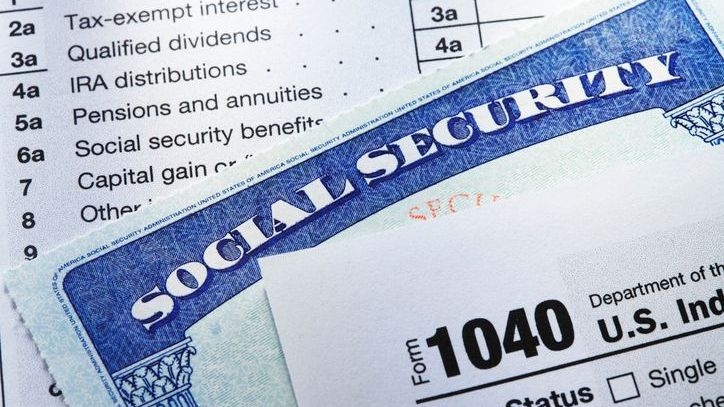Knowing when a spouse can claim Social Security benefits can significantly impact retirement planning. Spousal benefits allow one partner to receive a portion of the other partner’s Social Security benefits, providing financial support in retirement. By understanding the eligibility criteria, the impact of full retirement age and the effect of early or delayed claims, among other key factors, you can better make informed decisions about Social Security spousal benefits.
Have questions about how Social Security benefits fit into your overall retirement plan? Consider connecting with a financial advisor.
How Social Security Benefits Work
Social Security benefits are a cornerstone of retirement planning, providing financial support to retirees based on their earnings history. These benefits are funded through payroll taxes collected under the Federal Insurance Contributions Act (FICA).
Upon reaching retirement age, individuals can claim their Social Security benefits, which are calculated based on their highest 35 years of earnings. For spouses, Social Security offers an additional benefit known as spousal benefits, allowing them to receive a portion of their partner’s benefits. The maximum amount a spouse can receive is up to 50% of the primary earner’s benefit at full retirement age (FRA).
Spousal Benefit Eligibility
To be eligible for Social Security spousal benefits, a spouse must meet several criteria:
- The primary earner must have already filed for their own Social Security benefits.
- The spouse must be at least 62 years old to begin receiving spousal benefits, or any age if they have a child in their who is under 16 or who has a disability and is entitled to receive benefits on the spouse’s record.
- If the couple is divorced, the ex-spouse can still claim spousal benefits if the marriage lasted for at least 10 years and the claimant is currently unmarried.
Deciding when to take spousal benefits depends on various factors, including the age at which benefits are claimed and the financial needs of the household. While a spouse can start receiving spousal benefits as early as age 62, the amount will be reduced if claimed before reaching the FRA.
For those born between 1943 and 1954, the FRA is 66, but it gradually increases to 67 for those born in 1960 and later. Claiming benefits at FRA ensures the maximum spousal benefit, which can be a significant consideration in retirement planning.
The Impact of Early or Delayed Claims on Spousal Benefits
Understanding when a spouse can claim spousal benefits for Social Security is crucial in optimizing the financial outcomes for both partners.

Choosing to claim spousal benefits before reaching FRA results in a permanent reduction in the monthly benefit amount. This reduction is a key consideration for couples planning their retirement finances. For example, if a spouse begins claiming benefits at age 62, they may receive as little as 32.5% of the primary earner’s benefit, instead of the maximum 50% available at FRA (unless, that is, they are caring for a qualifying child).
On the other hand, delaying the claim past FRA does not increase the spousal benefit. Therefore, it is often advisable to claim spousal benefits at FRA to maximize the benefit amount received.
Other Factors That Could Reduce Your Spousal Benefit Payments
In addition to claiming spousal benefits before reaching FRA, several other factors can reduce the spousal benefit amount:
- Government pensions: For spouses who receive a government pension from work not covered by Social Security, the Government Pension Offset (GPO) can reduce spousal benefits. The GPO reduces the spousal benefit by two-thirds of the government pension amount. This reduction can significantly impact the financial planning for those who have served in government roles not covered by Social Security.
- Earnings from work and other income: Working while receiving spousal benefits can affect the benefit amount, particularly if the spouse has not yet reached FRA. The Social Security Administration enforces earnings limits, beyond which benefits are reduced. The following limits apply as of 2024:
- The limit for those who are under FRA for the full year is $22,320, with $1 in benefits withheld for every $2 earned above this threshold.
- In the year FRA is reached, this annual earnings limit increases to $59,520, with $1 in benefits withheld for every $3 earned over the threshold.
Once the spouse reaches FRA, there is no reduction in benefits regardless of earnings.
Frequently Asked Questions About Spousal Benefits

Whether you’re approaching retirement or simply looking to maximize your household income, knowing how spousal benefits work is essential. Here are some frequently asked questions about spousal benefits to help you navigate this complex topic.
Can I Collect Half of My Spouse’s Social Security at Age 62?
A spouse can begin collecting Social Security spousal benefits as early as age 62. However, claiming at this age means receiving a reduced benefit compared to waiting until full retirement age. If a spouse claims at 62, the benefit will be significantly lower than half of the primary earner’s full retirement benefit, so it’s important to consider the long-term financial impact of claiming early.
What Is the Maximum Spousal Benefit?
The maximum spousal Social Security benefit is up to 50% of the primary earner’s full retirement benefit. This maximum is only available if the spouse claims the benefit at their full retirement age, which varies based on birth year. For those born between 1943 and 1954, the full retirement age is 66, while for those born in 1960 or later, it is 67. Claiming before reaching full retirement age results in a permanently reduced benefit.
Can I Switch from Personal Benefits to Spousal Benefits?
It is possible to switch from your own Social Security benefit to a spousal benefit if it becomes more advantageous. To do this, you must be at least 62 years old and your spouse must have filed for their own benefits. If you initially claimed your own benefits and later become eligible for a higher spousal benefit, you can switch to the higher amount. This strategy can be particularly useful if your spouse’s earnings were significantly higher than yours.
Bottom Line
Navigating the nuances of Social Security spousal benefits can be complex but understanding the key aspects — the timing of claims, maximum benefit amounts and eligibility criteria — can help you make informed decisions that optimize your financial security. Whether you’re considering claiming early, waiting until full retirement age or switching from your own benefit to a spousal benefit, these decisions should align with your broader retirement strategy.
Social Security Planning Tips
Photo credit: ©iStock.com/LaylaBird, ©iStock.com/DNY59, ©iStock.com/andreswd
Read the full article here












